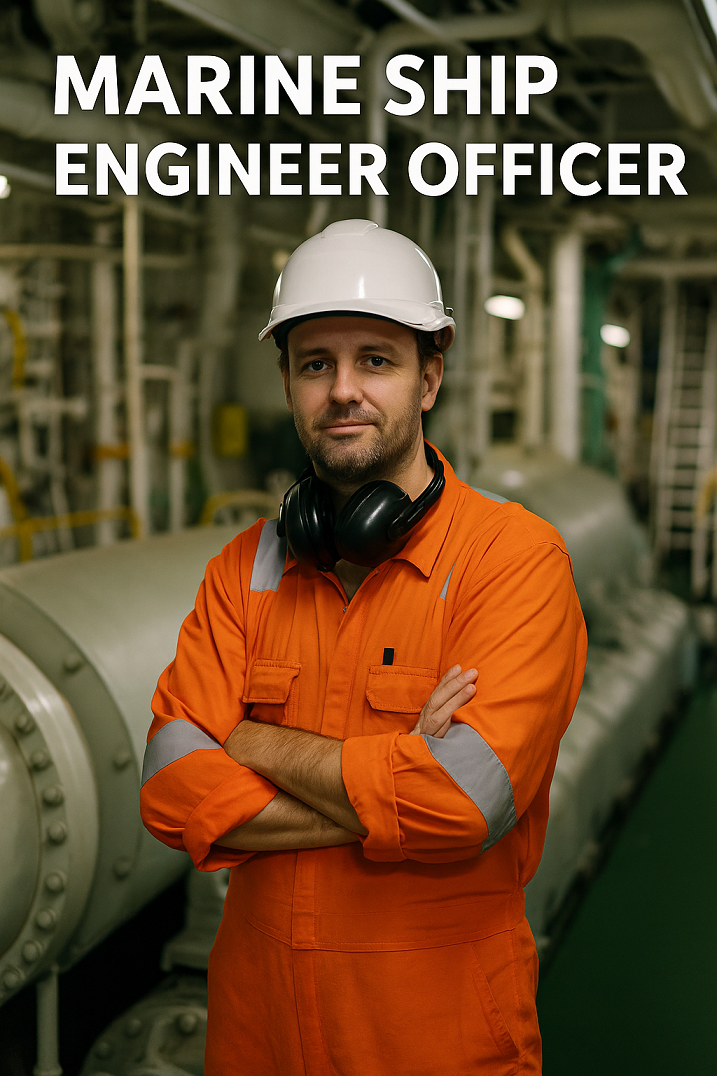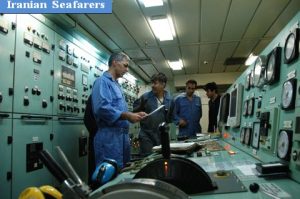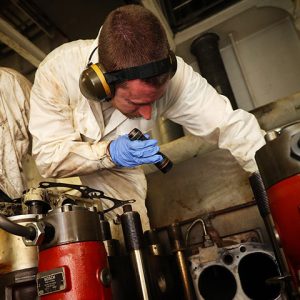Explore the role of a Marine Ship Engineer Officer in 2024. Learn about qualifications, salaries, vessel types, and career opportunities in marine engineering.
Why Marine Engineer Officers Are More Vital Than Ever
With over 90% of global trade carried by sea, marine engineers play a pivotal role in keeping the world connected.
A Marine Engineer Officer ensures the safe operation, maintenance, and repair of a ship’s technical systems — from massive propulsion engines to critical auxiliary machinery. Without them, ships simply wouldn’t sail.
In this 2024 guide, we’ll dive into what it takes to become a Marine Engineer Officer, the skills needed, salary expectations, and future trends shaping this exciting profession.
What is a Marine Engineer Officer?
A Marine Engineer Officer (also called a Maritime Engineer Officer) is a licensed seafarer trained in multiple technical disciplines, including:
-
Mechanical Engineering
-
Electrical Engineering
-
Electronics and Control Systems
-
Pneumatics and Hydraulics
-
Chemistry, Steam Generation, Gas Turbines
They are responsible for maintaining ship machinery and ensuring operational efficiency, crew safety, and environmental compliance under international regulations like STCW and MARPOL.
Key Responsibilities of Marine Engineer Officers
-
Machinery Operation & Maintenance: Running main propulsion and auxiliary machinery.
-
Safety Compliance: Ensuring operations meet STCW and IMO standards.
-
Troubleshooting & Repairs: Diagnosing faults and restoring machinery.
-
System Monitoring: Managing fuel, lubrication, distillation, refrigeration, and HVAC systems.
-
Documentation: Keeping detailed performance logs and maintenance records.
Qualifications and Certifications Required
To become a Marine Engineer Officer, candidates must meet several requirements:
-
STCW Certification: Mandatory compliance with the Standards of Training, Certification, and Watchkeeping.
-
Seagoing Service: Accumulate required sea service days.
-
Medical Fitness: Pass medical exams ensuring physical and mental fitness.
-
Ancillary Certifications: Specialized certificates for LNG carriers, offshore platforms, or Dynamic Positioning (DP) vessels.
🔎 Tip: The STCW Convention (1978), revised in 1995 and 2010, introduced stricter standards for training, emphasizing safety and environmental protection.
—-
Typical Career Path of a Marine Engineer Officer
| Rank | Experience Level | Salary Range (USD/month) |
|---|---|---|
| Fourth Engineer | Entry-level (Junior Engineer) | $2,000 – $3,000 |
| Third Engineer | 1–2 years experience | $3,000 – $5,000 |
| Second Engineer | Mid-career | $4,500 – $9,000 |
| Chief Engineer | Senior-level | $7,000 – $13,000 |
Career Progression:
-
Start as a Junior Engineer after graduating (typically 6–12 months training).
-
Pass Class II Certificate for promotion to Second Engineer.
-
Earn Class I Certificate to qualify as a Chief Engineer.
🌍 Salaries can vary significantly based on nationality, employer, ship type, and voyage type (international or coastal).
Types of Vessels Marine Engineer Officers Work On
Marine engineers are essential across a diverse range of ship types:
-
Container Ships
-
Tankers (Oil, Gas, Chemical)
-
Bulk Carriers
-
Passenger Ships and Cruise Liners
-
Offshore Platforms (including Dynamic Positioning vessels)
-
Naval Ships and Submarines
-
Tugs, Barges, and Ferry Vessels
🚢 Each vessel demands specific knowledge — for example, tankers require familiarity with inert gas systems and cargo handling operations.
Marine Engineering Department Structure Onboard
Modern engine departments have become leaner due to automation, but the structure remains crucial:
| Position | Role |
|---|---|
| Chief Engineer | Head of the engine department |
| Second Engineer | Oversees daily operations |
| Third Engineer | Manages auxiliary machinery |
| Fourth Engineer | Supports third and second engineers |
| Engine Cadet | In training |
| Electro-Technical Officer (ETO) | Manages electrical/electronic systems |
| Motorman | Watchkeeping and maintenance assistant |
| Oiler | Lubrication and minor maintenance |
| Wiper | Cleaning and basic engine room tasks |
Note:
Electro-Technical Officers (ETOs) are becoming increasingly vital due to the rise in ship automation and advanced electrical systems.

How to Become a Marine Engineer Officer: Step-by-Step
-
Education:
-
Complete a recognized Marine Engineering degree (3.5–4 years).
-
Subjects include applied physics, mathematics, mechanics, electronics, computer science, and maritime management.
-
-
Mandatory Training:
-
Complete STCW Basic Safety Training modules.
-
Pass simulator-based training for engine room operations.
-
-
Sea Service:
-
Undertake cadetship on ships to meet sea service requirements.
-
-
Certification:
-
Pass licensing exams (Certificate of Competency – CoC) based on STCW regulations.
-
-
Career Advancement:
-
Gain sea time and experience to pursue higher certifications and promotions.
-
📚 Pro Tip: Specialized postgraduate programs (MSc Maritime Engineering, Maritime Technology) can open up shore-based and managerial career opportunities.
Why Marine Engineers Matter: Safety, Environment, and Efficiency
Marine Engineer Officers are essential because:
- They guarantee crew and passenger safety by maintaining critical systems.
- They minimize environmental impact by ensuring compliance with MARPOL regulations.
- They ensure operational efficiency, reducing downtime and optimizing fuel consumption.
In addition, their multidisciplinary expertise makes them valuable in industries such as:
- Shipbuilding and Repairs
- Offshore Energy
- Naval Defense
- Maritime Research and Classification Societies
FAQs About Marine Engineer Officers
Q1: What is the starting salary of a Marine Engineer Officer?
A: Entry-level Fourth Engineers typically earn $2,000–$3,000 USD/month on international voyages, depending on employer and vessel type.
Q2: Is marine engineering a good career in 2024 and beyond?
A: Yes. With growing global trade, increasing environmental regulations, and demand for specialized vessels, marine engineering remains a stable and rewarding career.
Q3: How long does it take to become a Chief Engineer?
A: Typically 8–12 years, depending on experience, sea time, licensing exams, and company policies.
Q4: What subjects are studied in marine engineering courses?
A: Mathematics, physics, thermodynamics, fluid mechanics, ship structure, electronics, control systems, and environmental science.
Q5: Can Marine Engineers switch to shore jobs later?
A: Absolutely. Opportunities exist in ship management, ports, engine manufacturing, research, teaching, and technical consultancy.
Future Trends in Marine Engineering Careers (2024+)
-
Green Shipping Initiatives: Expertise in LNG, ammonia-fueled, and hybrid ships is becoming a key advantage.
-
Automation and Digitalization: Engineers must increasingly manage smart systems, IoT sensors, and remote maintenance platforms.
-
Sustainability Focus: Compliance with new IMO targets on carbon reduction is reshaping training and skills requirements.
🌱 Marine engineers who adapt to these trends will be in high demand.
Conclusion
A career as a Marine Engineer Officer offers global travel, competitive salaries, technical challenges, and diverse career paths — both at sea and ashore.
As international shipping continues evolving with technology and environmental priorities, marine engineers will remain at the forefront of innovation and global commerce.
If you’re passionate about mechanics, electronics, problem-solving, and the ocean, this career might just be your perfect voyage!
Further Reading & Resources









After reading your article, it reminded me of some things about gate io that I studied before. The content is similar to yours, but your thinking is very special, which gave me a different idea. Thank you. But I still have some questions I want to ask you, I will always pay attention. Thanks.
Your article made me suddenly realize that I am writing a thesis on gate.io. After reading your article, I have a different way of thinking, thank you. However, I still have some doubts, can you help me? Thanks.
This article opened my eyes, I can feel your mood, your thoughts, it seems very wonderful. I hope to see more articles like this. thanks for sharing.
Reading your article helped me a lot and I agree with you. But I still have some doubts, can you clarify for me? I’ll keep an eye out for your answers.
Your point of view caught my eye and was very interesting. Thanks. I have a question for you.
Thanks for sharing. I read many of your blog posts, cool, your blog is very good.
Great article! I appreciate the clear and insightful perspective you’ve shared. It’s fascinating to see how this topic is developing. For those interested in diving deeper, I found an excellent resource that expands on these ideas: check it out here. Looking forward to hearing others’ thoughts and continuing the discussion!
I don’t think the title of your article matches the content lol. Just kidding, mainly because I had some doubts after reading the article.
Thank you very much for sharing, I learned a lot from your article. Very cool. Thanks.
Your article helped me a lot, is there any more related content? Thanks!
I don’t think the title of your article matches the content lol. Just kidding, mainly because I had some doubts after reading the article.
Your point of view caught my eye and was very interesting. Thanks. I have a question for you.
Thanks for sharing. I read many of your blog posts, cool, your blog is very good.
Thanks for sharing. I read many of your blog posts, cool, your blog is very good.
Thank you for your sharing. I am worried that I lack creative ideas. It is your article that makes me full of hope. Thank you. But, I have a question, can you help me?